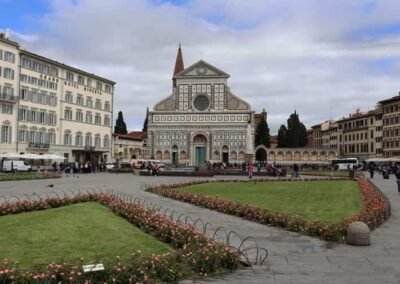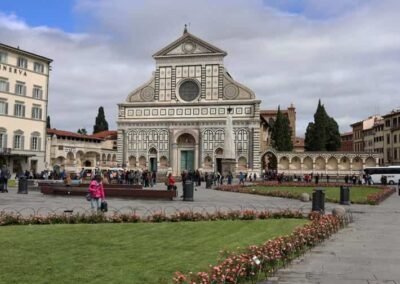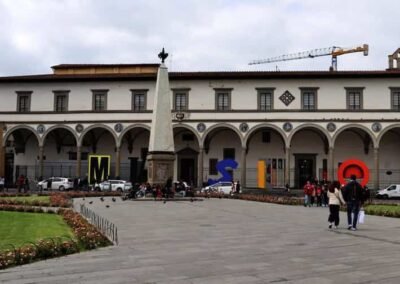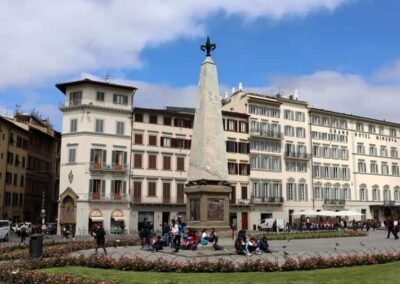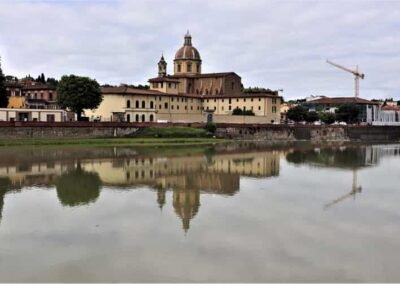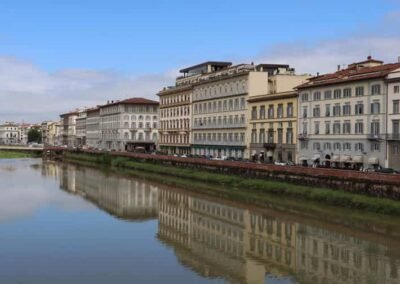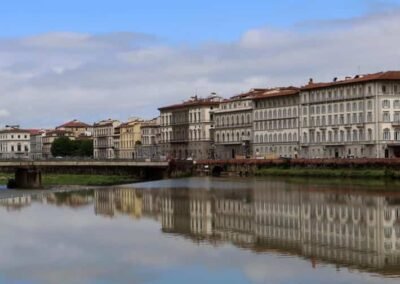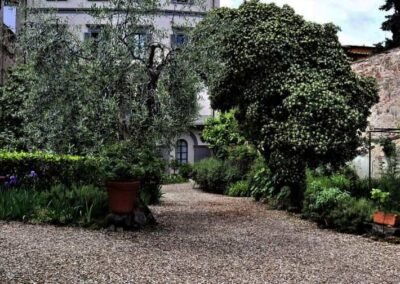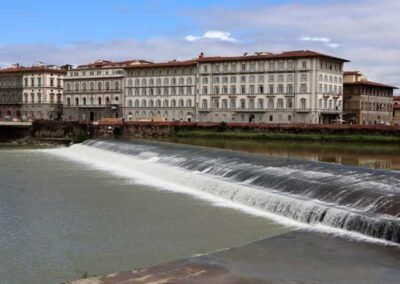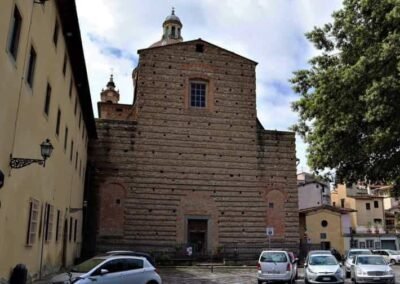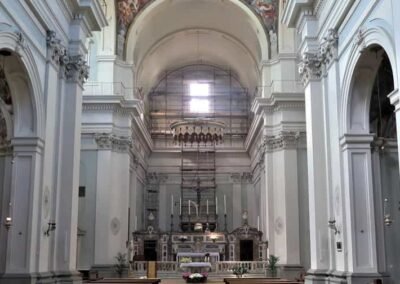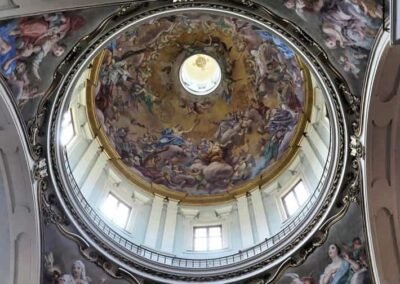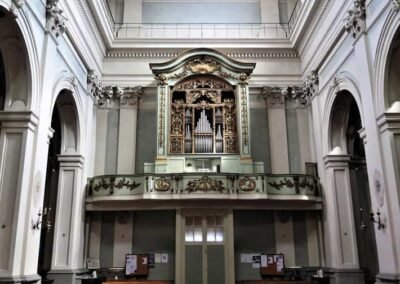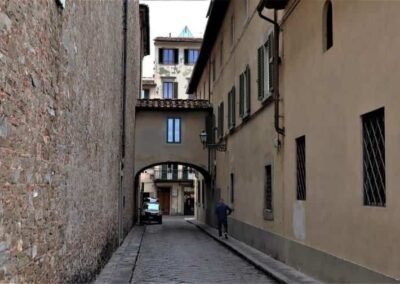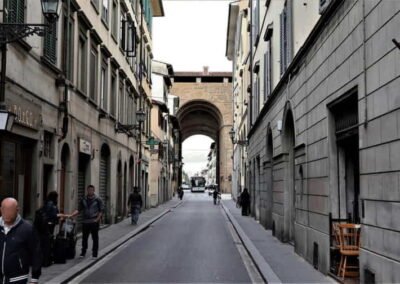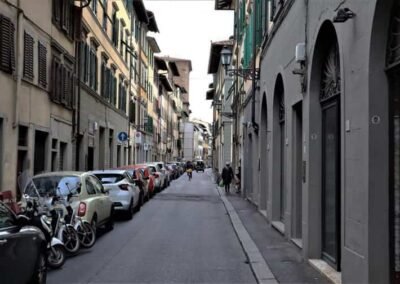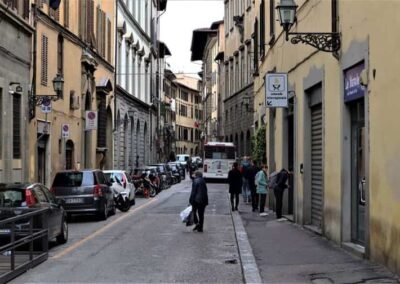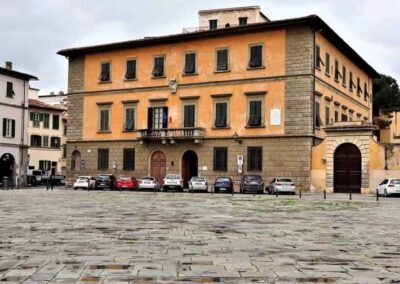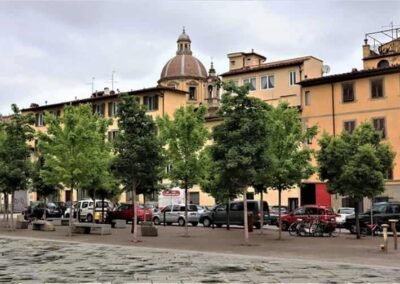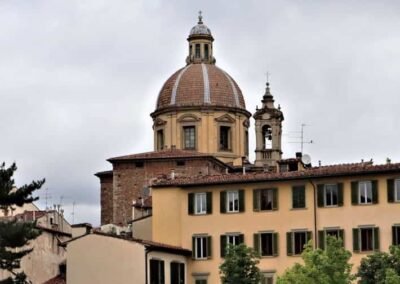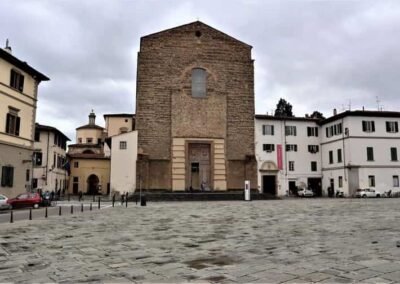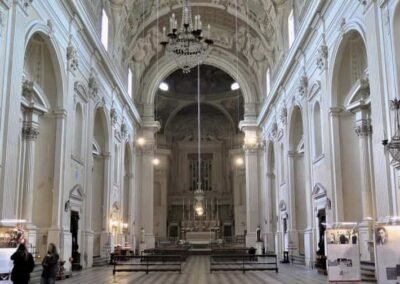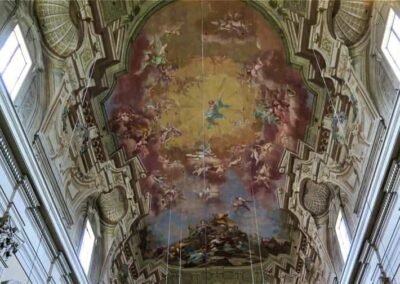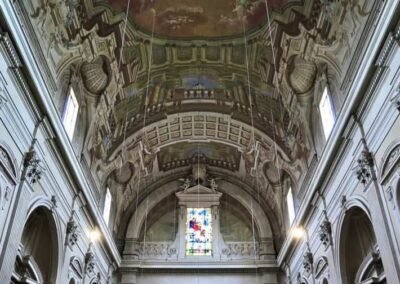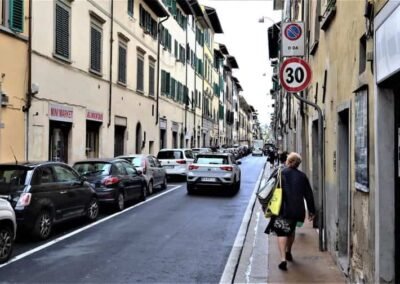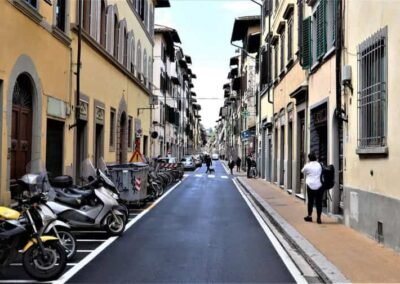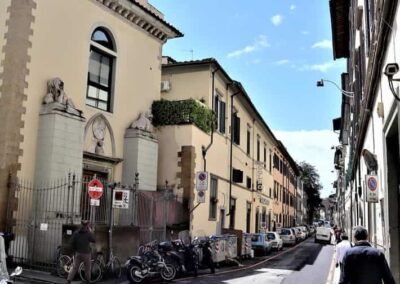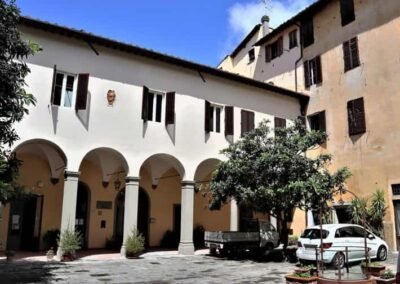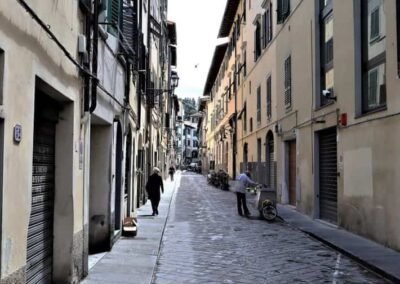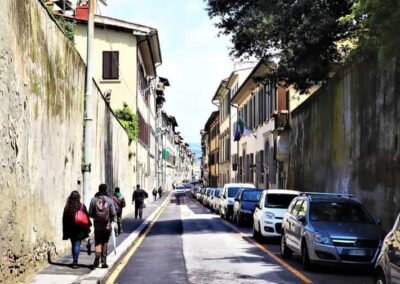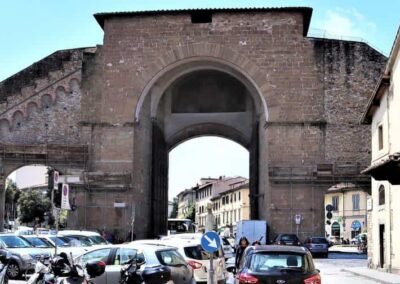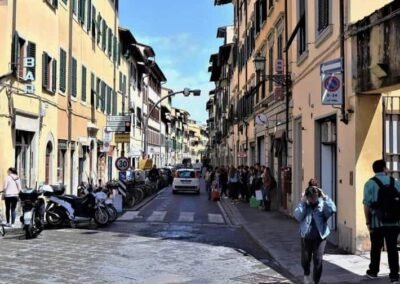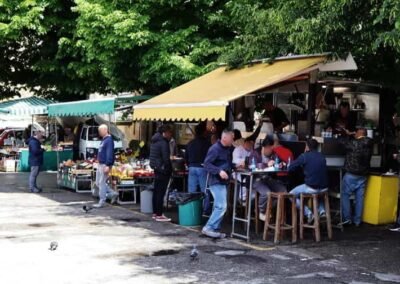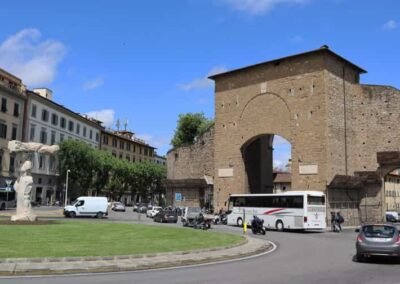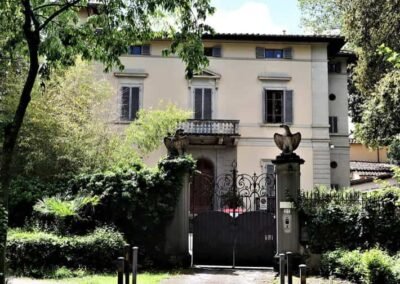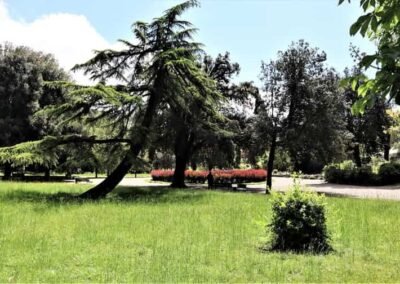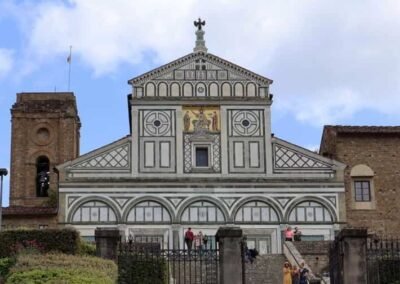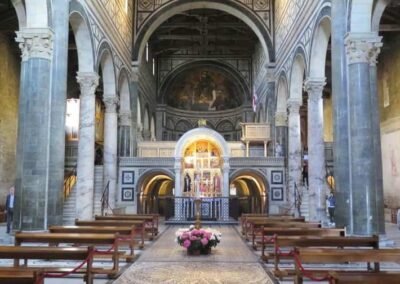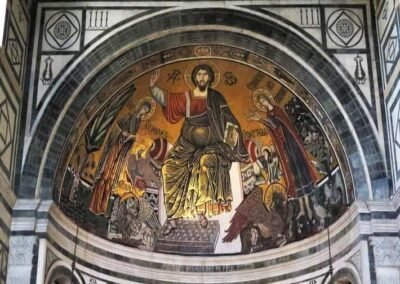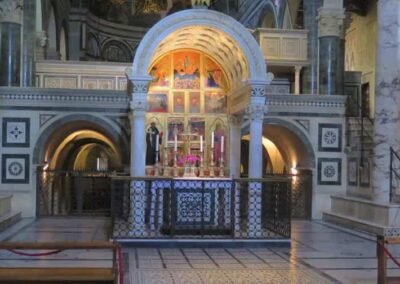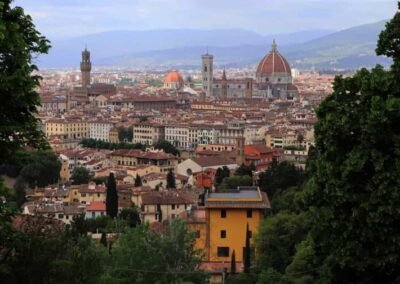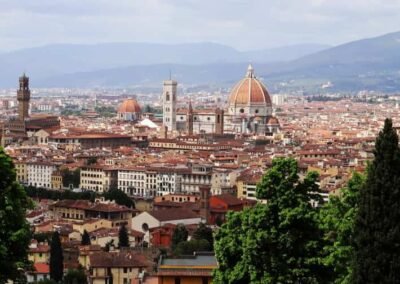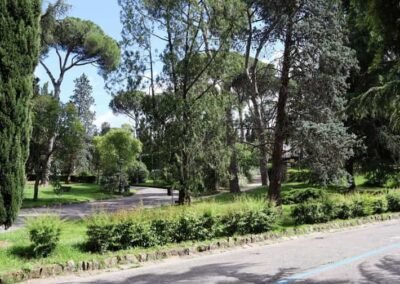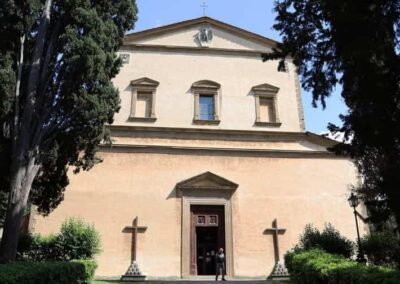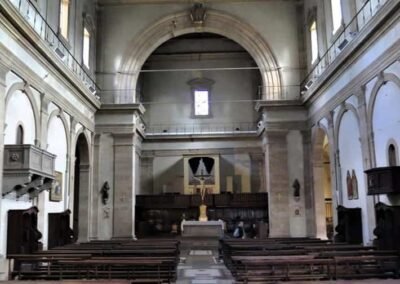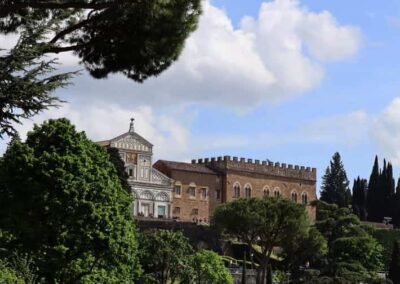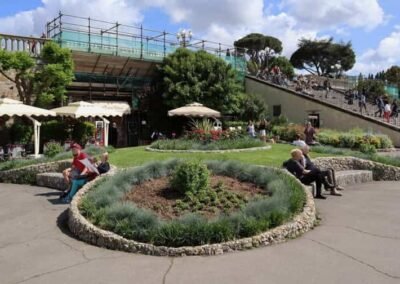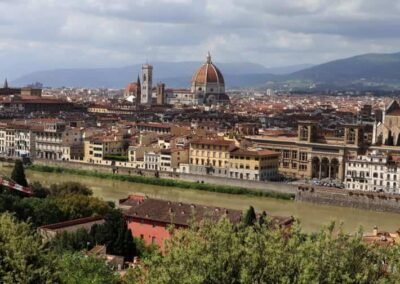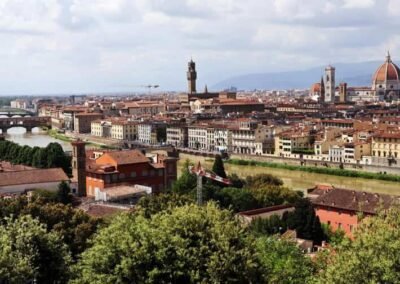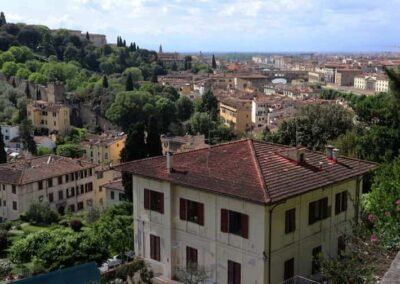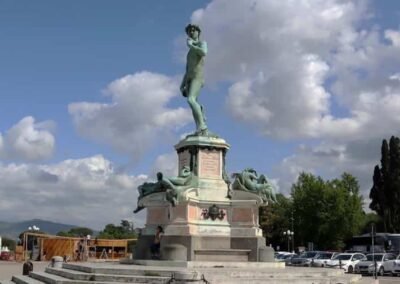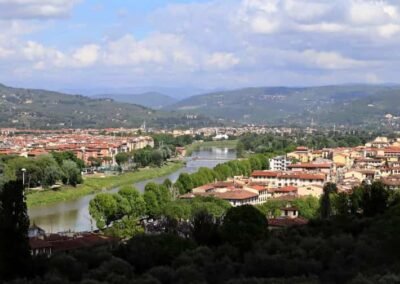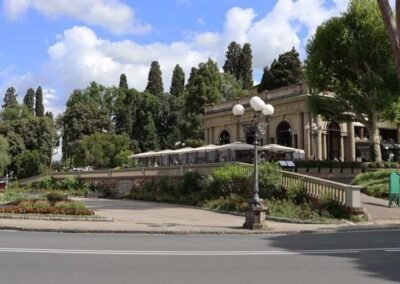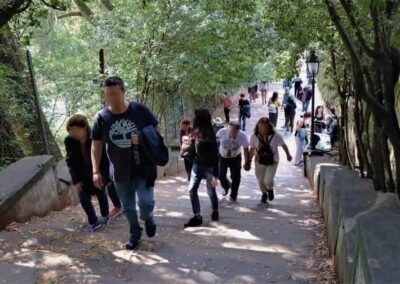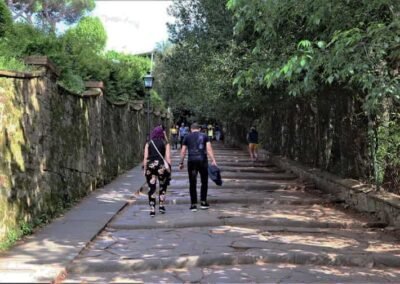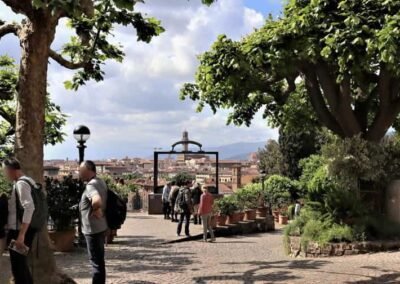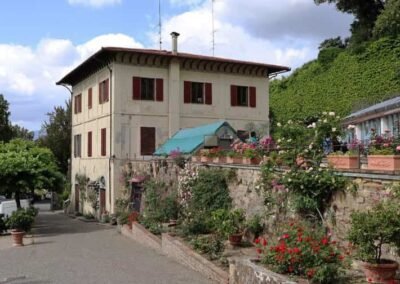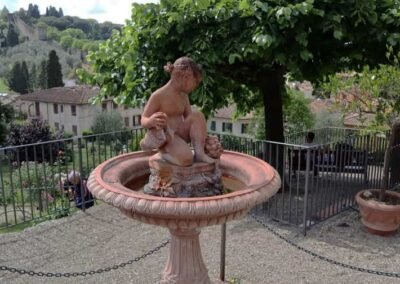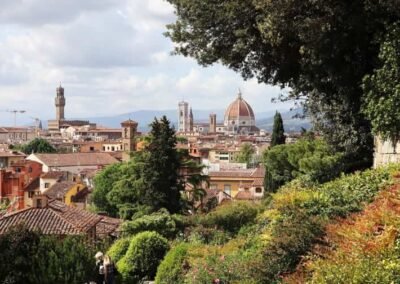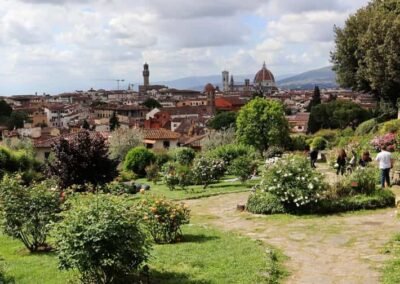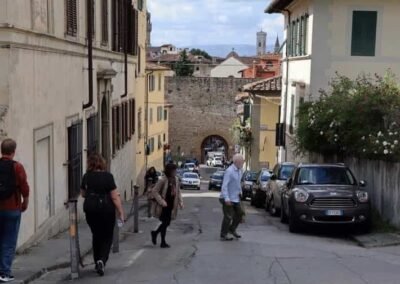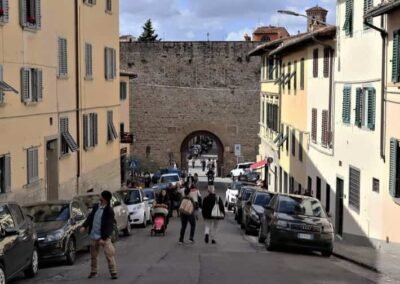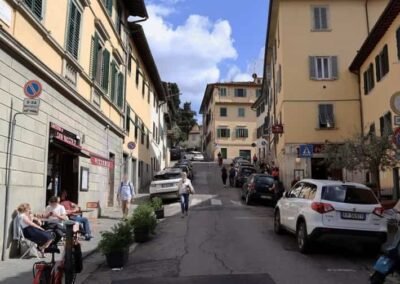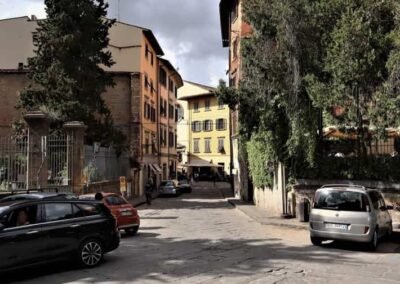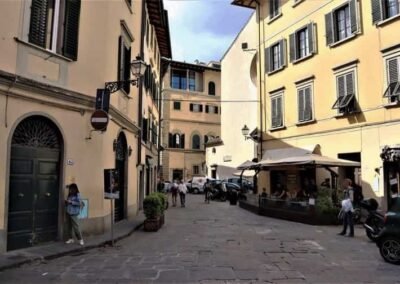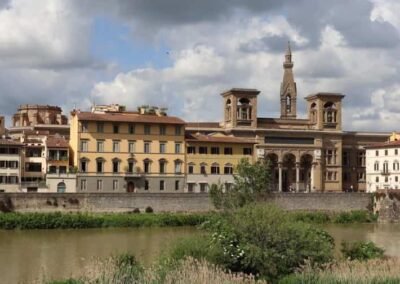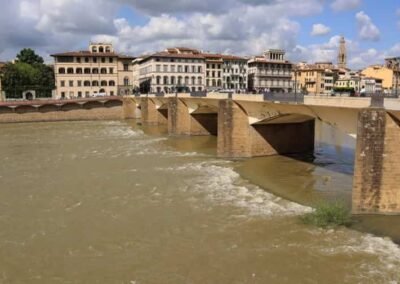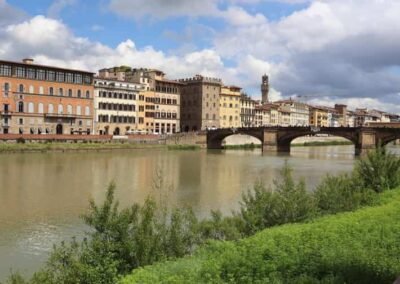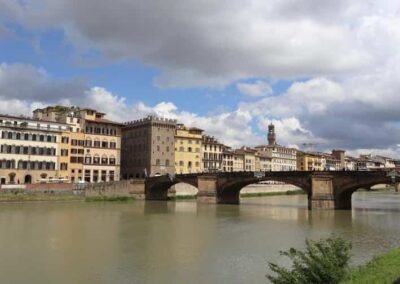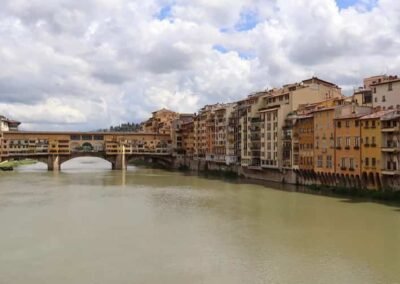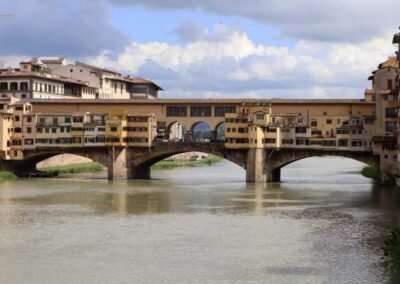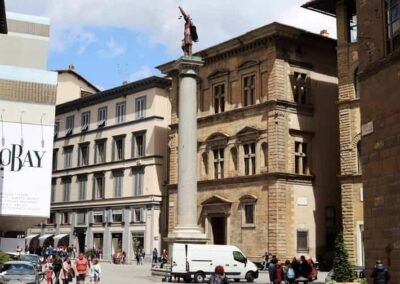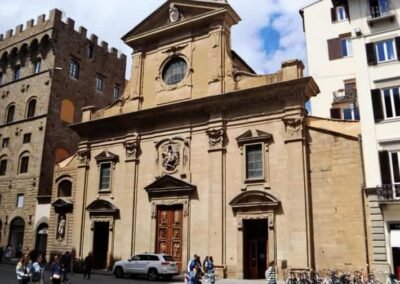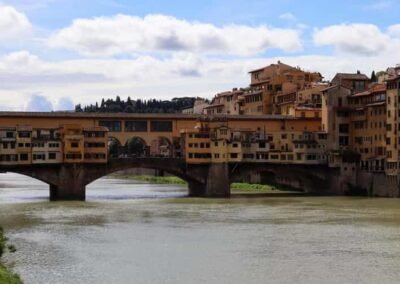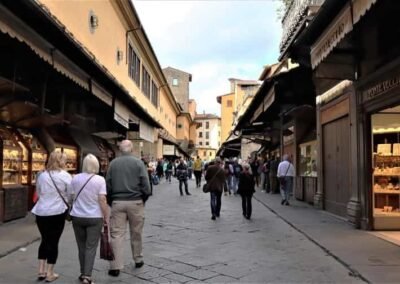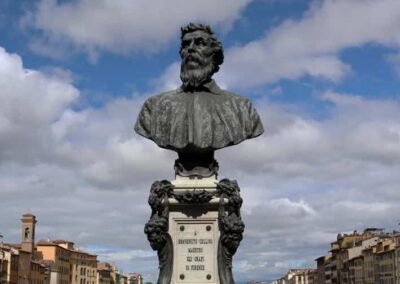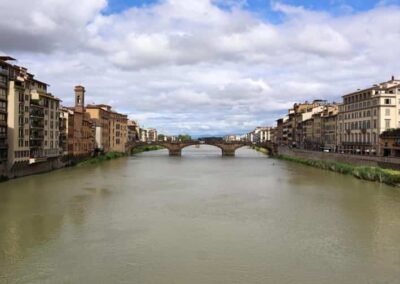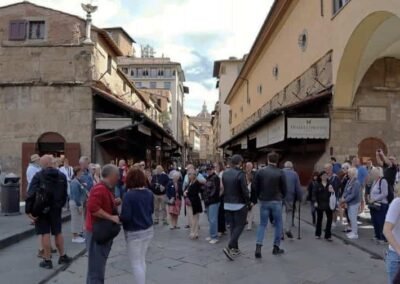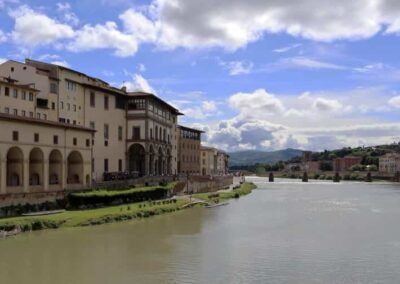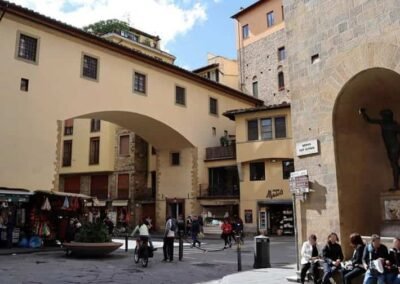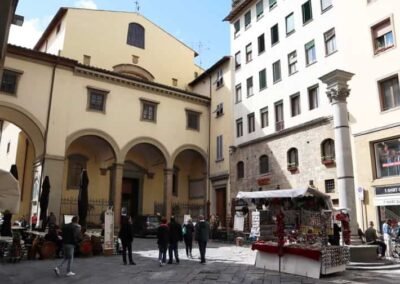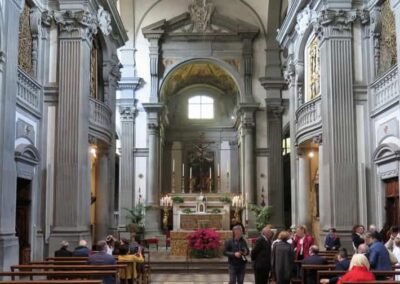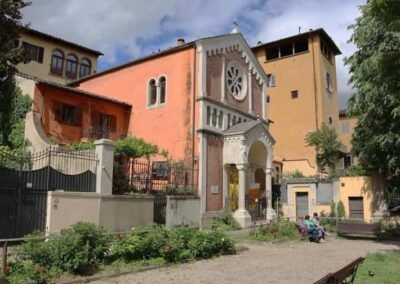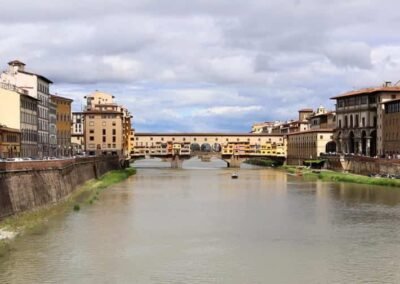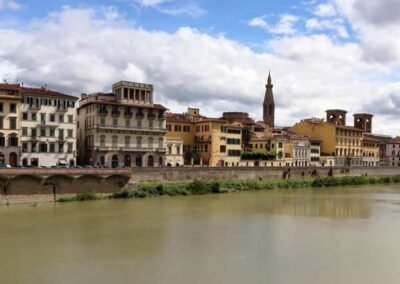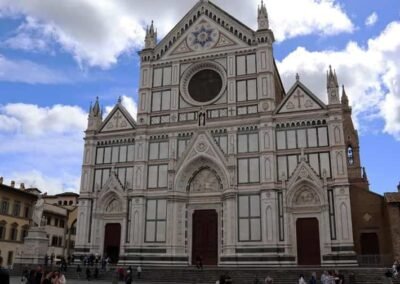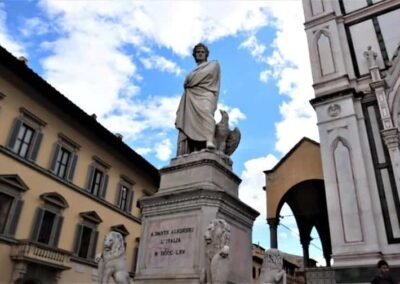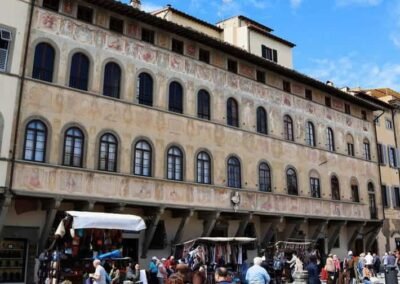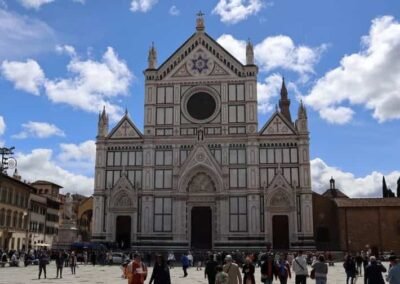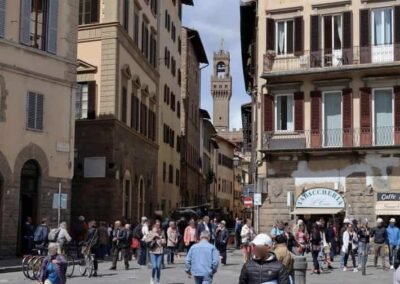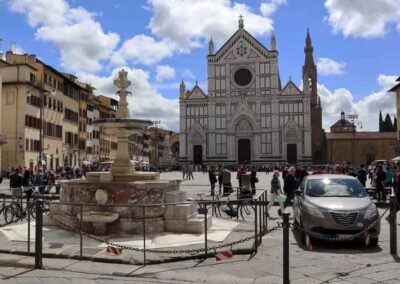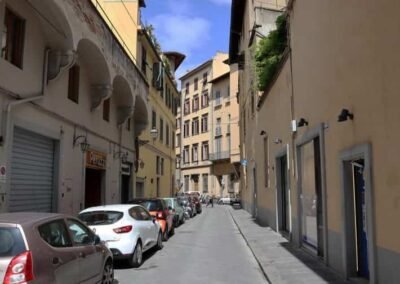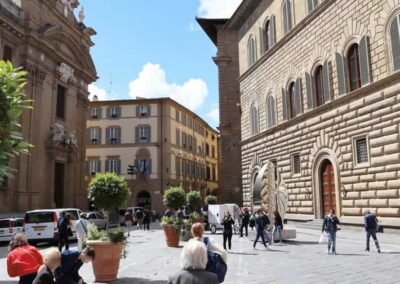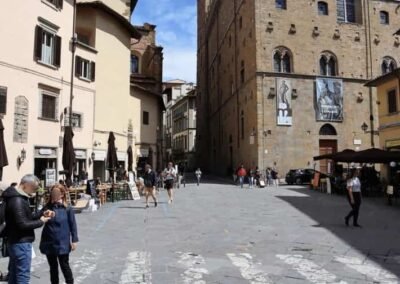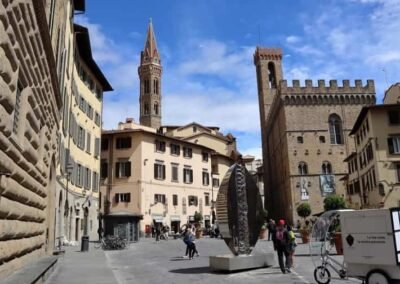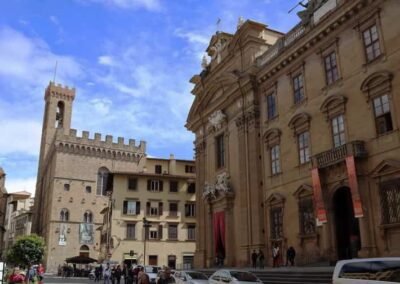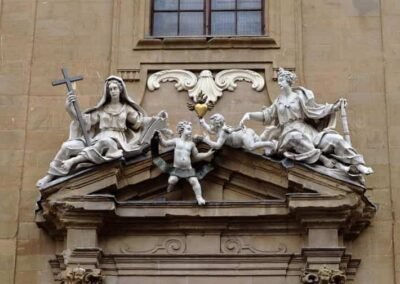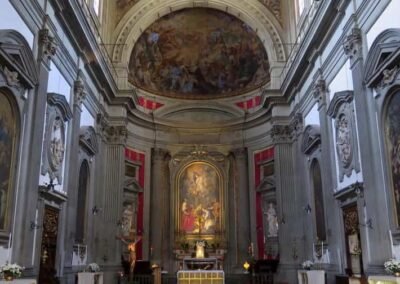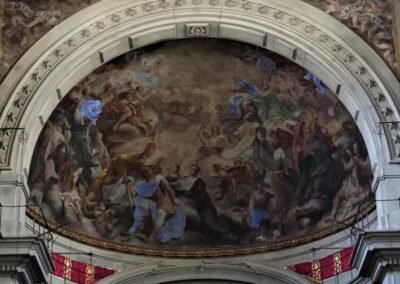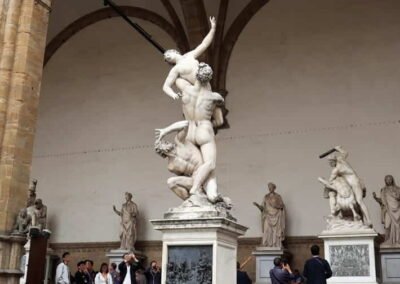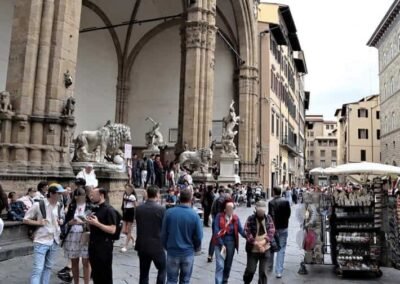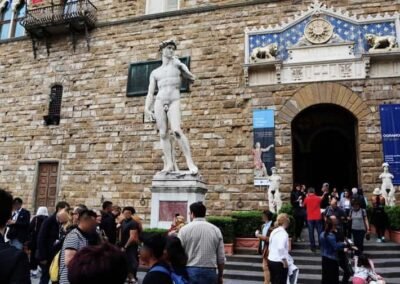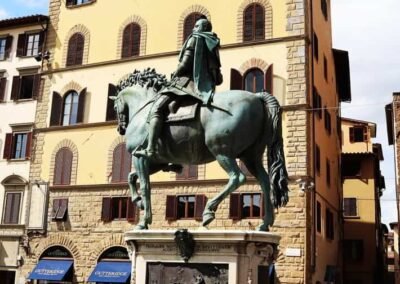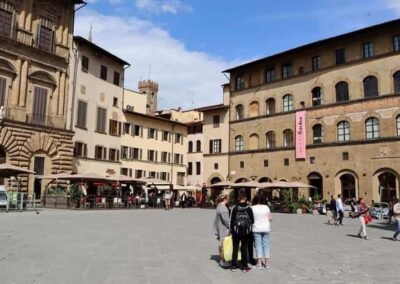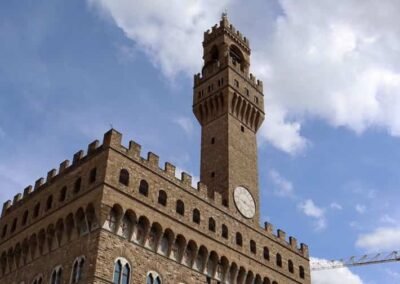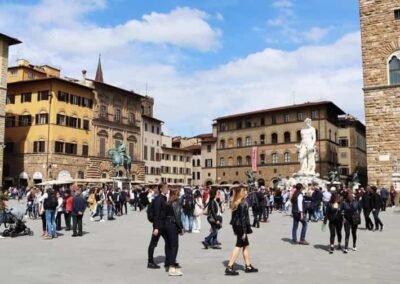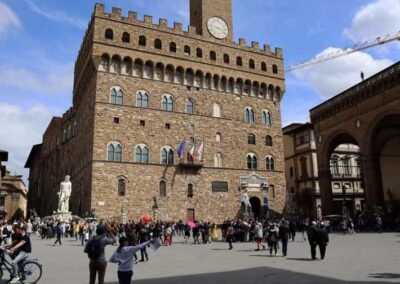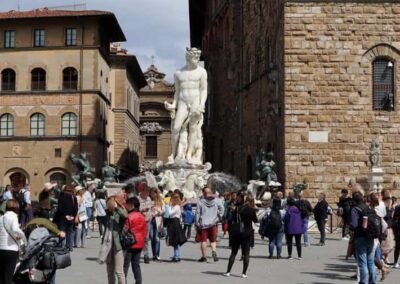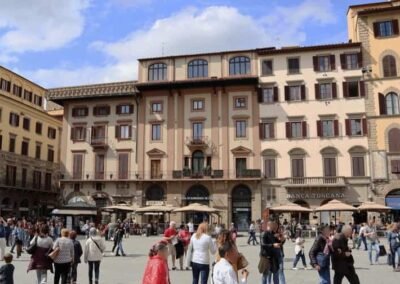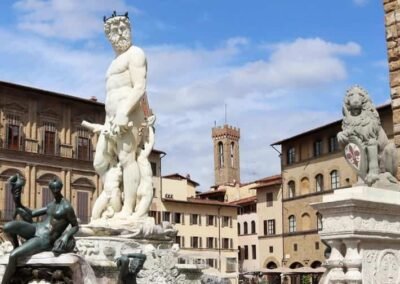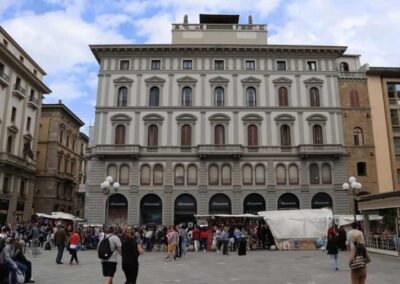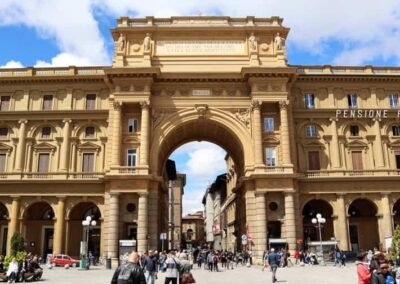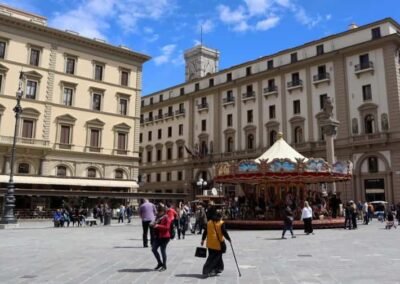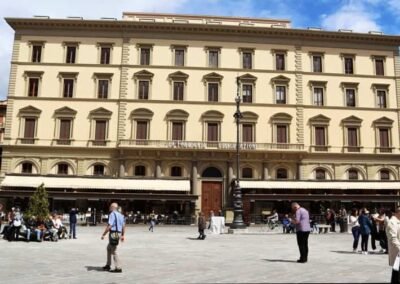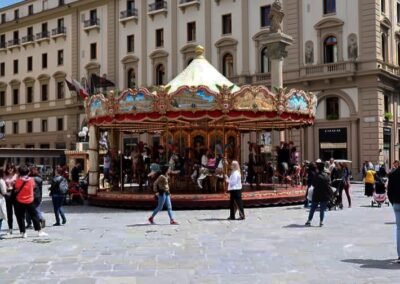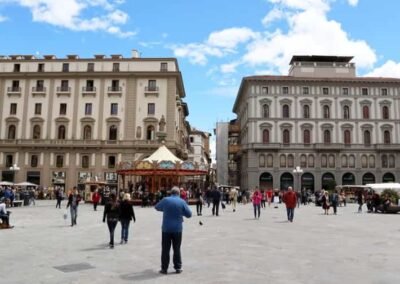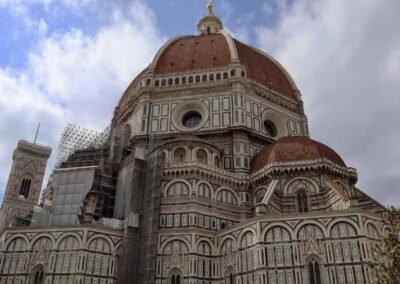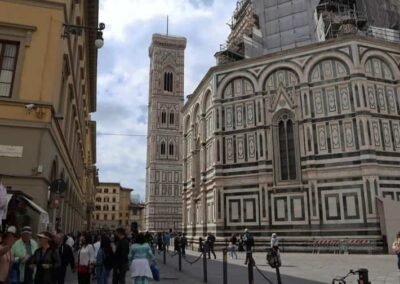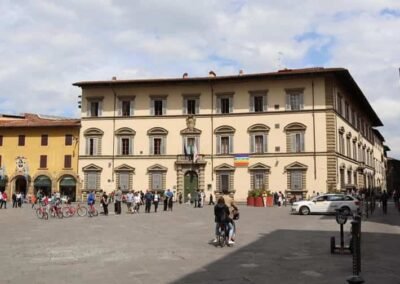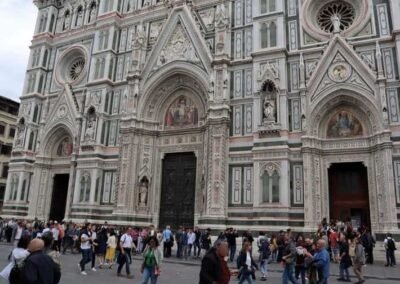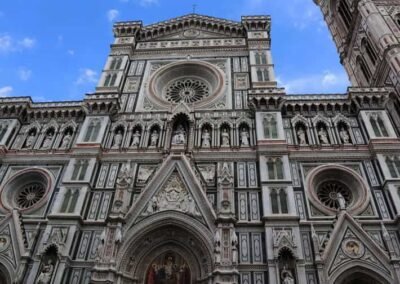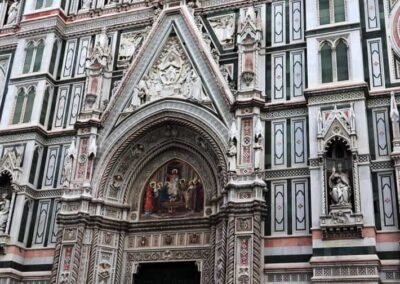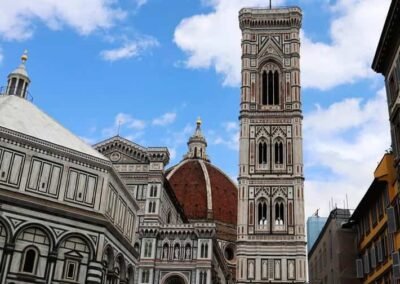HOME
THE REGIONS OF ITALY
PLACES IN ITALY
Italy in Photos
Piazzale Michelangelo, 50125 Firenze, Italy (May 2019)
Florence
Florence, the capital city of Italy’s Tuscany region, is renowned for its profound historical significance, remarkable architecture, and vibrant cultural heritage. Known as the cradle of the Renaissance, Florence has played a pivotal role in shaping Western art, literature, and architecture. Its influence extends far beyond its compact geographical area, making it one of Italy’s most celebrated and visited cities. The city’s historical centre, a UNESCO World Heritage site, is a treasure trove of artistic and architectural marvels. The iconic Florence Cathedral, also known as the Cathedral of Santa Maria del Fiore, dominates the skyline with its striking dome engineered by Filippo Brunelleschi. This masterpiece of Renaissance architecture is adorned with intricate marble facades and stunning frescoes. Adjacent to the cathedral is the Campanile di Giotto, a bell tower renowned for its detailed sculptures and panoramic views of the city. The Piazza della Signoria is another key historical and cultural landmark in Florence. This central square is home to the Palazzo Vecchio, the city hall with its imposing tower and ornate facade. The square also houses several notable sculptures, including a replica of Michelangelo’s David, which stands as a symbol of the city’s artistic heritage. The original statue of David, crafted by Michelangelo between 1501 and 1504, is housed in the Galleria dell’Accademia, which is a must-visit for art enthusiasts. The gallery boasts an extensive collection of Renaissance art, including works by Sandro Botticelli, Leonardo da Vinci, and many others.
Florence’s artistic legacy extends to the Uffizi Gallery, one of the most prestigious art museums in the world. Located in the Piazza della Signoria, the Uffizi houses an unparalleled collection of Renaissance art, including masterpieces by Botticelli, Raphael, and Caravaggio. The museum’s layout, designed by Giorgio Vasari, is a reflection of its historical importance and architectural elegance. The Ponte Vecchio, a medieval stone bridge spanning the Arno River, is another iconic landmark. Known for its distinctive shops that line the bridge, the Ponte Vecchio has been a central part of Florence’s commercial and cultural life for centuries. The bridge’s picturesque setting offers stunning views of the river and the city’s landscape, making it a popular spot for both tourists and locals. Florence’s influence is not limited to its art and architecture; it extends to its cuisine and cultural traditions. The city is famous for its traditional Tuscan dishes, such as Bistecca alla Fiorentina, a thick and flavourful steak, and ribollita, a hearty vegetable soup. The vibrant food markets, such as Mercato Centrale, offer an array of local produce and delicacies, providing a true taste of Florentine culture.
The Basilica of Santa Croce, another significant site, is the final resting place of several notable figures, including Michelangelo, Galileo Galilei, and Niccolò Machiavelli. The basilica’s serene cloisters and chapels are adorned with impressive frescoes and are a testament to the city’s rich artistic and intellectual heritage. Florence’s charm extends beyond its historical landmarks. The city is known for its beautiful gardens and open spaces, such as the Boboli Gardens, which offer a tranquil retreat from the bustling city. The gardens are a splendid example of Italian landscaping, featuring grand fountains, sculptures, and panoramic views of Florence. In addition to its historical and artistic attractions, Florence is a vibrant, modern city with a lively cultural scene. The annual Florence Biennale showcases contemporary art from around the world, reflecting the city’s ongoing relevance in the global art scene. Florence also hosts numerous festivals, concerts, and cultural events throughout the year, fu
Worth a Visit
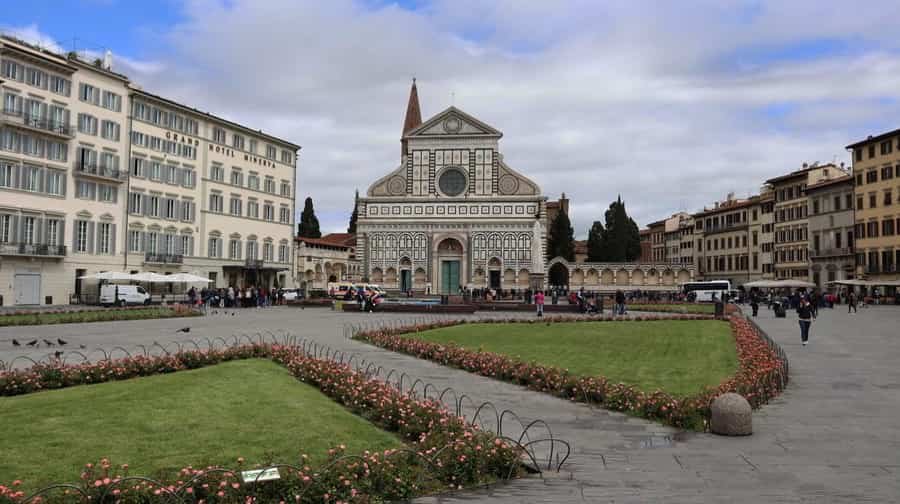
The Piazza di Santa Maria Novella, situated just a short walk from Florence’s main railway station, is one of the city’s most elegant and historically significant squares. Dominated by the magnificent façade of the Basilica of Santa Maria Novella, the piazza offers an exquisite blend of medieval charm, Renaissance artistry, and vibrant urban life. The origins of the square date back to the Middle Ages, when it served as an open space in front of the Dominican church and convent of Santa Maria Novella, begun in the 13th century. Over time, it was enlarged and paved to accommodate religious gatherings, public events, and even sporting competitions. In the late 16th century, under the patronage of Grand Duke Cosimo I de’ Medici, the piazza underwent significant transformation.
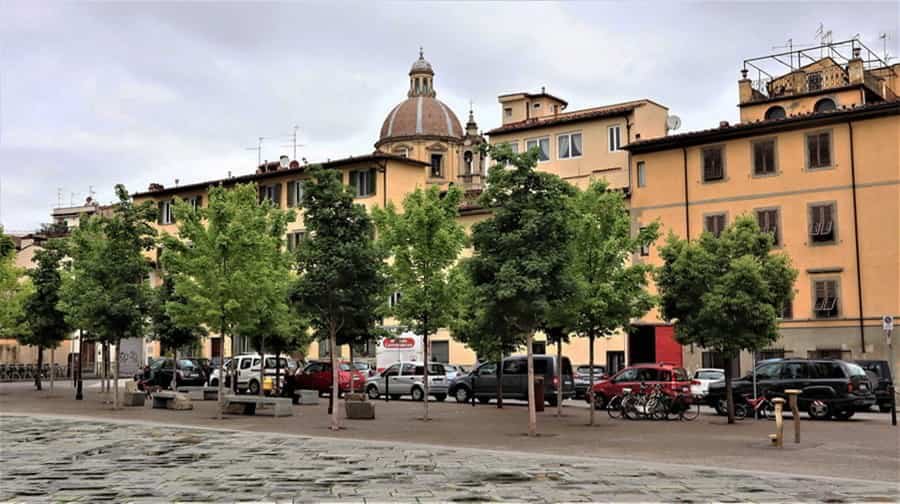
Tucked away in the vibrant Oltrarno district, the Piazza del Carmine is a spacious and atmospheric square that serves as the forecourt to one of Florence’s most important churches. the Basilica di Santa Maria del Carmine. While less crowded than the city’s more famous piazzas, it offers a rich blend of art, history, and neighbourhood life, making it a rewarding destination for those seeking an authentic Florentine experience. The square takes its name from the Carmelite convent established here in the late 13th century. Over time, the Basilica di Santa Maria del Carmine became renowned for housing the Brancacci Chapel, whose fresco cycle, begun by Masaccio and completed by Masolino and Filippino Lippi, s considered a cornerstone of Renaissance painting. These works, celebrated for their ground-breaking use of perspective and naturalism, influenced generations of artists, including Michelangelo.
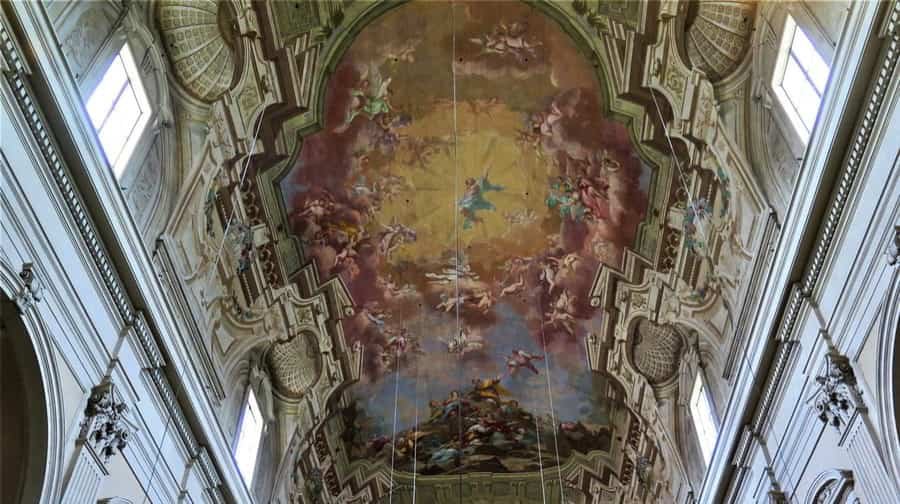
The Chiesa di Santa Maria del Carmine, located in the lively Oltrarno district of Florence, is one of the city’s most significant churches, renowned above all for housing the celebrated Brancacci Chapel, a cornerstone of Renaissance art. Though its plain exterior may not draw immediate attention, within its walls lies a treasure that has profoundly shaped the course of Western painting. The church was founded in 1268 by the Carmelite Order, who established a large convent complex on the site. Over the following centuries, the building grew in importance, enriched by chapels commissioned by prominent Florentine families. The most famous of these is the Brancacci Chapel, begun around 1424 by Felice Brancacci and decorated with frescoes by Masaccio and Masolino da Panicale, later completed by Filippino Lippi.
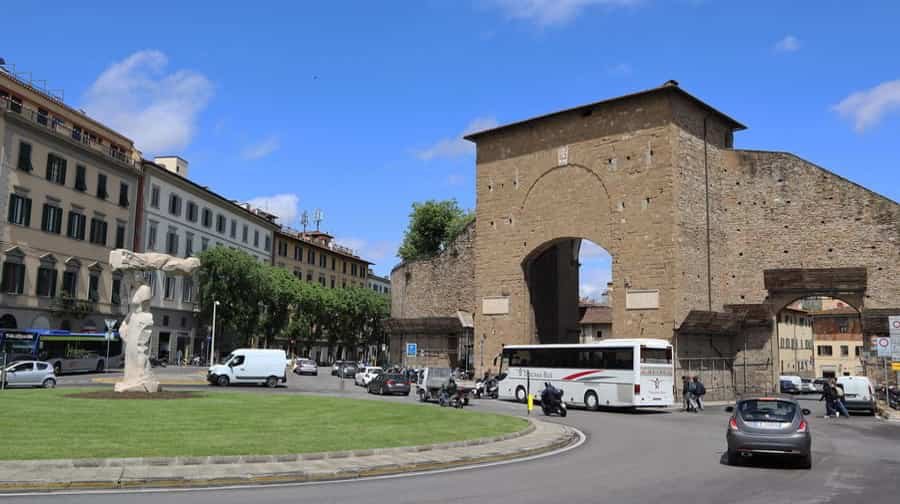
Porta Romana is a historic gateway located in Piazzale di Porta Romana, Florence. Built in the late 13th century, this imposing structure was one of the key entrances to the city, originally part of Florence’s defensive walls. The gate’s strategic location on the southern side of Florence controlled access from the Roman road that led to Rome, marking its significance in medieval times. The architecture of Porta Romana combines both medieval and Renaissance elements. The gate features a robust, arched design typical of medieval fortifications, with a large central archway that allowed passage for both people and goods. The tower above the arch provided a vantage point for guards to oversee and manage the flow of traffic into the city.
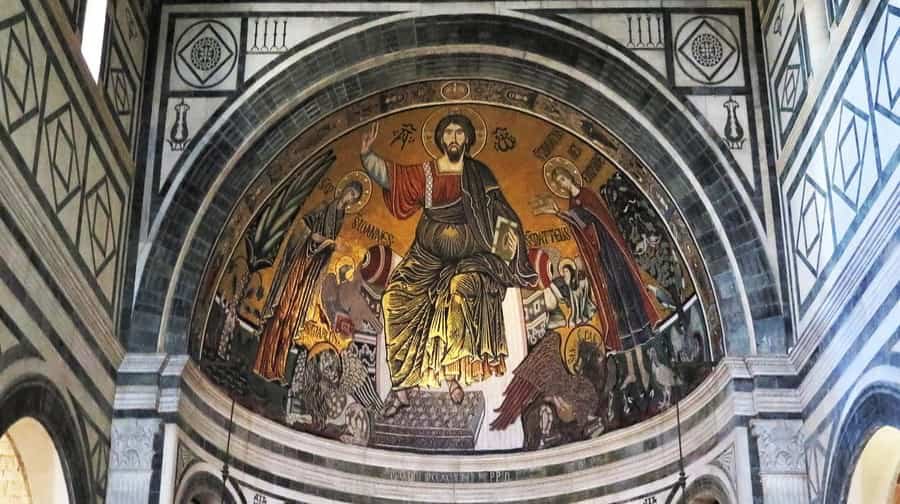
Perched high above Florence on the crest of the Monte alle Croci, the Abbazia di San Miniato al Monte is one of the city’s most beautiful and oldest religious monuments. Its striking white-and-green marble façade, shimmering in the Tuscan sunlight, dominates the skyline and offers some of the most breath-taking panoramic views over the historic centre. The abbey’s origins date back to the early 11th century, when construction began on the present basilica over a site associated with Saint Minias (San Miniato), a Christian martyr believed to have been beheaded in the 3rd century during the persecutions of Emperor Decius. According to legend, Minias picked up his severed head and walked to this hilltop, where he chose to die, making the location a place of deep spiritual significance
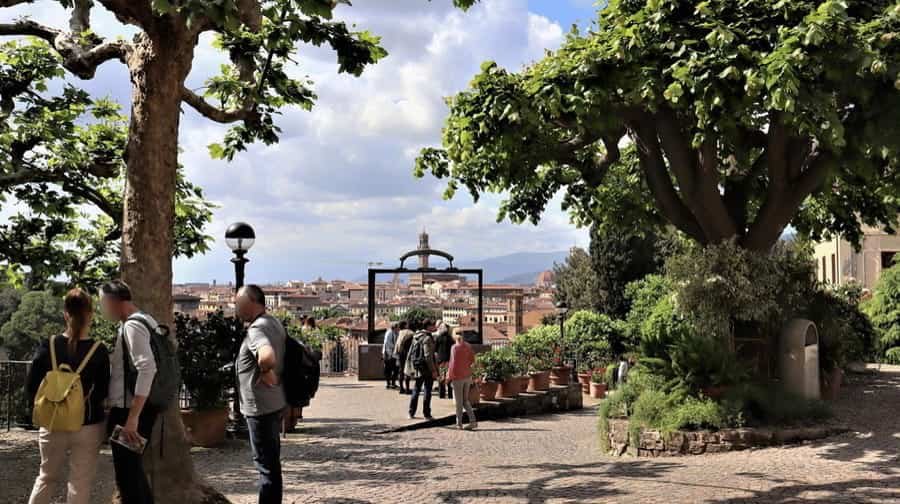
Tucked away on the slopes of Florence’s famed Oltrarno district, just below the panoramic Piazzale Michelangelo, the Giardino delle Rose (Rose Garden) is one of the city’s most enchanting and peaceful green spaces. Created in 1865 by the French architect Giuseppe Poggi, the garden was part of a wider urban redevelopment project marking Florence’s brief role as the capital of the newly unified Kingdom of Italy. Poggi envisioned a terraced oasis where locals and visitors could enjoy sweeping views of the city’s domes, towers, and red-tiled rooftops framed by the gentle hills of Tuscany. Covering about one hectare, the garden is home to over 350 varieties of roses from around the world, blooming in a dazzling array of colours and scents from late spring through early summer.
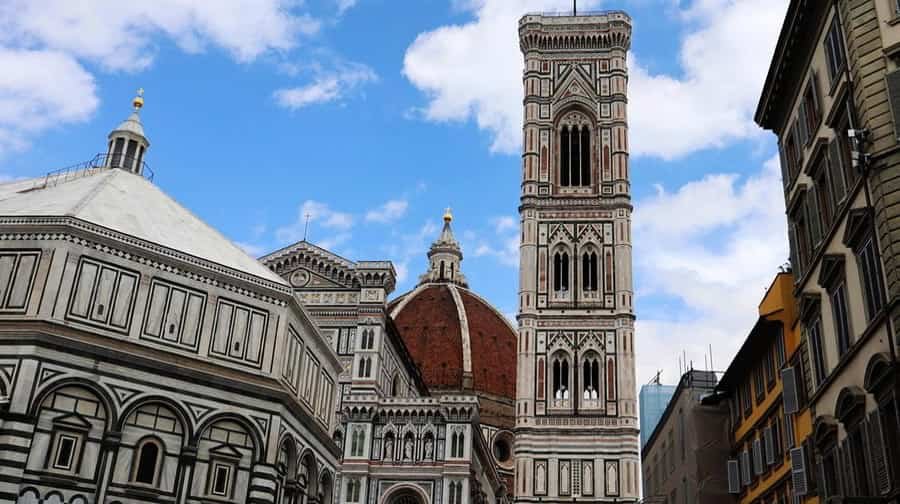
Piazza del Duomo is the monumental heart of Florence, a dazzling stage where some of the most celebrated masterpieces of Italian Gothic and Renaissance architecture stand side by side. Located in the historic centre, this square is dominated by the Cathedral of Santa Maria del Fiore, whose soaring red-tiled dome—designed by Filippo Brunelleschi, has become the city’s most recognizable symbol. Around it, the Baptistery of San Giovanni, Giotto’s Bell Tower, and the cathedral’s intricate marble façade together form one of the most harmonious and breath-taking architectural ensembles in the world. The piazza’s history stretches back to Roman times, when this area served as a central point in the ancient settlement of Florentia. The Baptistery, with its octagonal plan and richly decorated bronze doors by Andrea Pisano and Lorenzo Ghiberti, predates the cathedral and stands as one of the oldest buildings in the city, dating to between the 11th and 12th centuries.
Photo Gallery of Walk 1 in Firenze – Piazza di Santa Maria Novella to Parco e giardino Il Bobolinom
Approximately 3.44 km – 2.14 miles
The walk starts in Piazza di Santa Maria Novella – Piazza degli Ottaviani – Via dei Fossi – Piazza Carlo Goldoni – Ponte alla Carraia – Lungarno Soderini – Piazza di Cestello – Chiesa di San Frediano in Cestello – Via di Cestello – Borgo S. Frediano – Porta di San Frediano, Borgo S. Frediano – Walk back along Borgo S. Frediano to Via del Drago D’Oro – Piazza del Carmine – Chiesa di Santa Maria del Carmine – Borgo S. Frediano – Via dei Serragli – Via Santa Maria – Porta Romana, Piazzale di Porta Romana – Viale Niccolo Machiavelli – Parco e giardino Il Bobolinom
Photo Gallery of Walk 2 in Firenze – Via delle Porte Sante to Lungarno Torrigiani
Approximately 1.80 km – 1.12 miles
The walk starts at Via delle Porte Sante – Abbazia di San Miniato al Monte – Via di S. Salvatore Al Monte – Chiesa di San Salvatore al Monte – Piazzale Michelangelo – Passaggio Via del Monte alle Croci – Giardino delle rose, Viale Giuseppe Poggi – Via del Monte alle Croci – Porta San Miniato – Via S. Miniato – Via di S. Niccolò – Via dei Rena – Piazza Nicola Demidoff – Lungarno Serristori – Lungarno Torrigiani
Photo Gallery of Walk 3 in Firenze – Lungarno Guicciardini to Piazza di Santa Croce
Approximately 2.03 km – 1.26 miles
The walk starts in Lungarno Guicciardini – Piazza de’ Frescobaldi – Ponte Santa Trinita – Via de’ Tornabuoni – Piazza di Santa Trinita – Via de’ Tornabuoni – Lungarno degli Acciaiuoli – Ponte Vecchio – Borgo S. Jacopo – Via de’ Guicciardini – Piazza di S. Felicita – Chiesa di Santa Felicita – Via de’ Guicciardini – Via de’ Bardi – Lungarno Torrigiani – Giardino Martin Lutero, Lungarno Torrigiani -Ponte alle Grazie – Via dei Benci – Borgo Santa Croce – Via Antonio Magliabechi – Piazza di Santa Croce
Photo Gallery of Walk 4 in Firenze – Borgo dei Greci to Piazza del Duomo
Approximately 1.74 km – 1.08 miles
The walk starst in Borgo dei Greci – Piazza di S. Firenze – Piazza di S. Firenze, Piazza di S. Firenze – Via dei Magazzini ia Via della Condotta – Via dei Magazzini – Piazza della Signoria – Via degli Speziali – Via dei Calzaiuoli – Piazza della Repubblica – Via degli Speziali – Via dei Calzaiuoli – Piazza del Duomo
COPYRIGHT © 2018-2025 ITALY IN PHOTOS - ALL RIGHTS RESERVED
